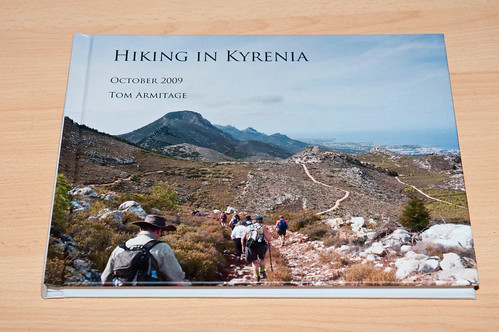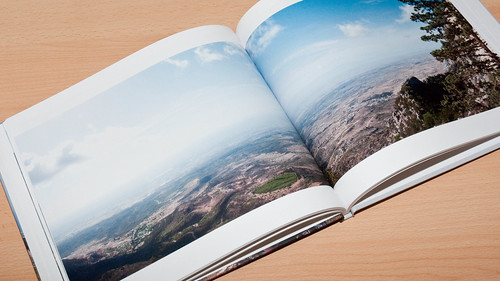-
"Those of you who watch a lot of Hollywood movies may have noticed a certain trend that has consumed the industry in the last few years. It is one of the most insidious and heinous practices that has ever overwhelmed the industry… I speak of course, of THE COLOR GRADING VIRUS THAT IS TEAL & ORANGE!!!" Oh dear. An entertaining follow up to that great Stu Maschwitz post on 'porange'.
-
"10 years ago, on this Friday in March of 2000, the Dot.Com bubble burst in the UK." [This is very good, Simon Wistow!]
-
"Institutions are platforms / Sketching in things". Chris' introduction from the #mbsp SXSW panel; really good stuff, and that was only the introduction! Would have loved to have seen the whole thing.
-
"Somewhere in the future, a picture of David Minor—in jeans and a tie, face beatific under a studio light, sleeves rolled up to expose the Eugene Debs quote tattooed on his arm—is berthed in a database table in off-system storage, waiting to be remade." Lovely, sharp, writing from Joel Johnson.
A book of photographs that I made
20 March 2010

I made a book.
Specifically: I made a book of photographs from my week hiking in Cyprus. I’ve wanted to make a book of some of my photography for a while now, but not really had anything that hung together well enough to devote a large number of pages to.
The magic of print-on-demand is that, really, that shouldn’t matter: you can slap a bunch of images together, hit print, and get a book back. But I felt if I was going to make a book, it should feel book-ish. So: it would need a degree of focus, enough material to make a decent length, and it ought to look like somebody took some care over it.

I was very pleased with many of my pictures from Cyprus, and there was certainly enough of them to make a decent book. But I decided to give it a bit of focus. I stripped out people pictures (because really, they’re not of interest to anyone other than the group walking, and they’re not my best portraits). I stripped out pictures of food. The focus was to be the environment around Kyrenia, as experienced on foot: a lot of landscape, some pictures of walking, some architectural/indoors shots, and a set of pictures from Kyrenia Harbour. One chapter per hike; an extra chapter from the harbour.
That would be enough for a 70-80 page book, 10×8 landscape.

I went with Blurb, mainly because I liked their tool for making books (BookSmart) the most. I’m not much cop with InDesign, and this wasn’t the project to be learning it on. BookSmart was nice because, unlike so many other print-on-demand publishers’ tools, it wasn’t a laggy, overcomplex browser-based tool written in Flash. It was a native application to download, meaning I could work locally.
It turned out to be just fine. Its templating engine is good, although it doesn’t let you spread contents across pages – some cunning workarounds are necessary to make double-page spreads, although it’s totally possibly with some work.
I spent some extra time on doing my best to make it not look thrown together: starting chapters on right-hand pages, aligning photographs identically wherever possible, printing a few proofs to double-check it all. And then, when I was pretty sure I couldn’t do much else, I hit print.

I’m very happy with the results. It’s a set of photographs I’m pleased with, and seeing them displayed like this makes me proud of the consistency and quality. I’m also pleased with the book: the double-page spreads were obviously tricky, but by and large, everything has come out well, and the imagewrap cover is very good. My only disappointments are with some text-sizing – I could have made a few bits of text much smaller and better line-spaced. And the quality is great, all things considered: I went for Blurb’s premium quality paper stock, because, you know, if I’m going to spend £20+ on a book, the extra £2 is worth it for pictures that I care about. That worked well.
It’s also great to see images first seen on screen, and then as small prints, in book form. And: it really does feel like I book. That’s the most satisfying part – that I achieved my goal with it. I’m now thinking about what other photographic projects might turn into books.
And, finally: I’m making it available to buy. I doubt anyone will buy it – it’s just some pictures I took one holiday and grouped together – but Blurb essentially makes it a one-click operation to make the book available to others. And so I thought I may as well, and we’ll see what happens. If you’re interested, it’s available here.
One more thing ticked off my todo in 2010 list. What’s next?
Cardini
20 March 2010
The only known footage of Cardini performing. And what a joy it is; it’s not just sleight of hand, not just a clever skit, not just great timing; it’s magic. Ten minutes! And, most remarkably: he’s wearing gloves for the first three minutes.
Marvellous.
-
"If there is a bigger Splinter Cell fan than myself, I haven't yet met them; but in their zeal to promote the newest iteration, Ubisoft has caused Sam Fisher to tweet. And I don't mean they've made him chirp, which would be preferable. They've given him a Twitter account where he tweets in a supremely earnest way about how tormented his shit is.<br />
<br />
*No.*" Oh dear. -
"A team of scientists has succeeded in putting an object large enough to be visible to the naked eye into a mixed quantum state of moving and not moving." Oh boy. That's quite a thing (and: quite a sentence!)
-
"I've been using Copy with Style command, which I took from this blog post. It copies text selection as RTF so when the code is pasted into Keynote, it looks exactly the same as it looked in TextMate, including font style, size and colors. Code can be then modified in Keynote, while the style is preserved." Useful!
-
"Here’s my notes for the talk Streaming Massive Environments from 0 to 200 MPH presented by Chris Tector from Turn 10 Studios. He’s listed as a Software Architect there, and obviously has a deep understanding of the streaming system they used on Forza 3. This talk was nice and deep technically, and touches all parts of the spectrum." Very technical. But: if you can grok what's going on (and this is about at the limits of my simple understanding – could barely start to recreate what's described), it's very interesting about the challenge of rendering beautiful, high detail environments at a solid 60fps, mainly by pre-preparing a lot, and maximising streaming performance both from disk and from memory.
-
"A computer mystery/romance set five minutes into the future of 1988." Looks jolly good.
-
Ben Heck made his own pinball table. And it's not some half-baked pinball table running off a connected PC, with off the shelf components; it's largely built from scratch, from the cabinet to the LED matrix (!). All running off a single microcontroller. He's a smart guy.
-
"Nethack does what computers do best – what computers were invented for. It hands you a symbolic representation of something, and lets you interact with it. The symbols are utterly mundane … but the interaction is extraordinarily complicated. Interacting with the game of Nethack can be glorious, frustrating, hilarious, and satisfying. Like any great game, it's even fun to watch and talk about when played by others. There are probably more web pages of people telling their Nethack war stories than there are pages discussing the game itself.<br />
<br />
This is one of those pages. I'm writing this because, after twenty years of playing, I finally completed the game." It's quite a tale, and full of glimpses of secrets I never discovered. Always more of a rogue man.
-
"Need something to read? Enjoy these selections from among the most frequently bookmarked articles on Instapaper."
-
"I see Valve Software today holding the same position in the overall media landscape that Marvel Comics occupied in the early-mid 1960s. In both cases, we have two experienced studios, neither the mainstream-recognized giants of their fields, who made an unusual decision: they chose to spend the creative capital gained from prior commercial success to quietly revolutionize their respective medium's dominant genres, rather than take the safer path of grinding out more derivative sameness."
-
Ben Zeigler's notes on Bunge's Jaime Griesemer's talk at GDC, all about balancing. Sample quotation: "It can be tricky to balance, because designers can misinterpret competence (getting good at a weapon) with the weapon being balanced. We CANNOT use our intuition at this stage because it will lie to us. Changes will have to be done in larger batches, and we need to avoid bias effects." Really, the whole thing is jampacked with interesting stuff (not all of which I agree with, but most of it is very good indeed).
-
"Just because you give a game a theme, doesn’t make a game about that thing. … A game’s mechanics give it meaning. It fundamentally does not matter how you theme a game, the mechanics ultimately determine what a game is about." Soren Johnson is smart.
-
"XKCD minus XKCD is a site dedicated to removing XKCD from the XKCD comic strips, with apologies to Garfield Minus Garfield." Very droll.
-
"Harrison's concept–which works, by the way–uses the body as a sort of echo chamber. Which is to say, when the user taps a particular part of their body, a sensor worn around the upper arm can tell if the tap-point was at a particular spot on the forearm or on one of the individual fingertips, by assessing the vibrations sent throughout the body by the tap." The detection of tap location is remarkable – a single sensor, that picks out location based on the characteristics of the body's reverberation from the tap.
-
EA Sports Active 2.0: for iPhone, Wii, and PS3 (along with centralized online hub). That's a really, really interesting lineup of products – especially considering that there's going to be peripherals for all of them – and slices through a casual-games/casual-exercise market.